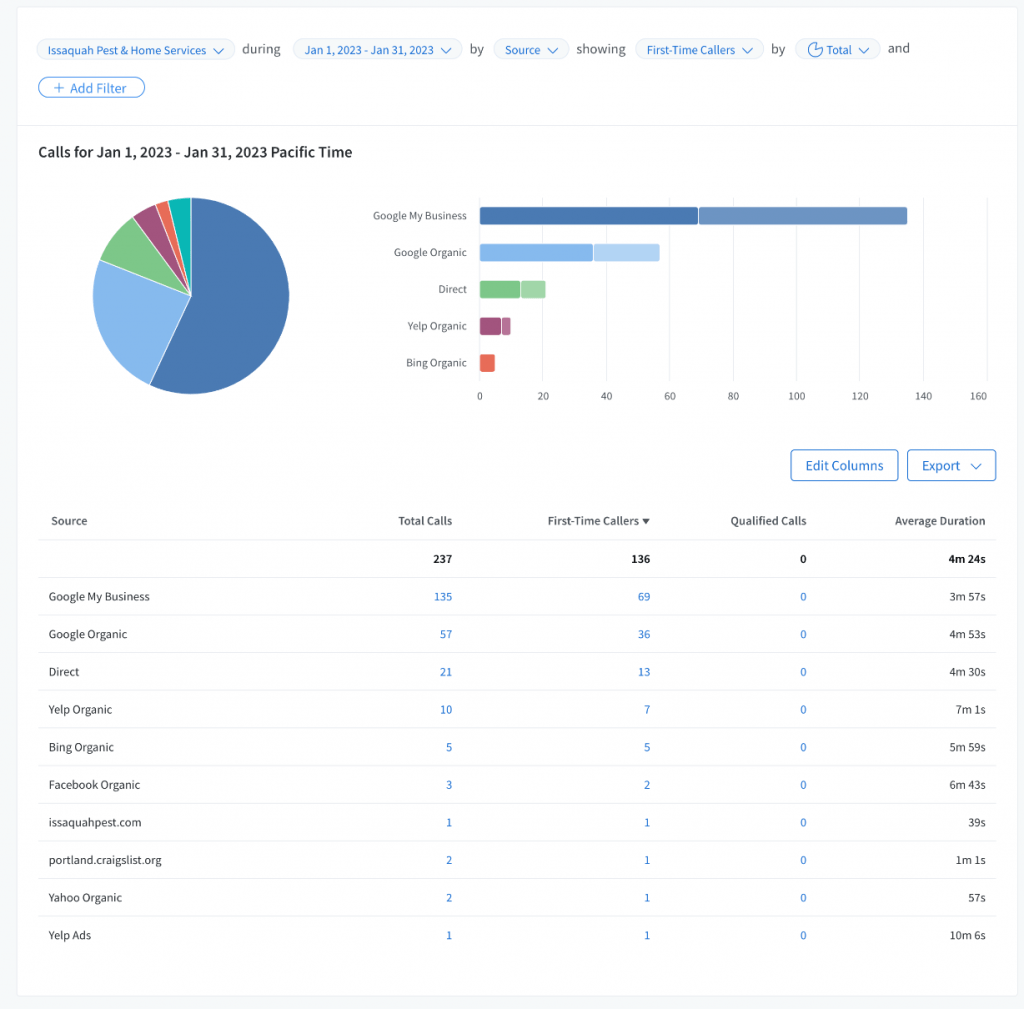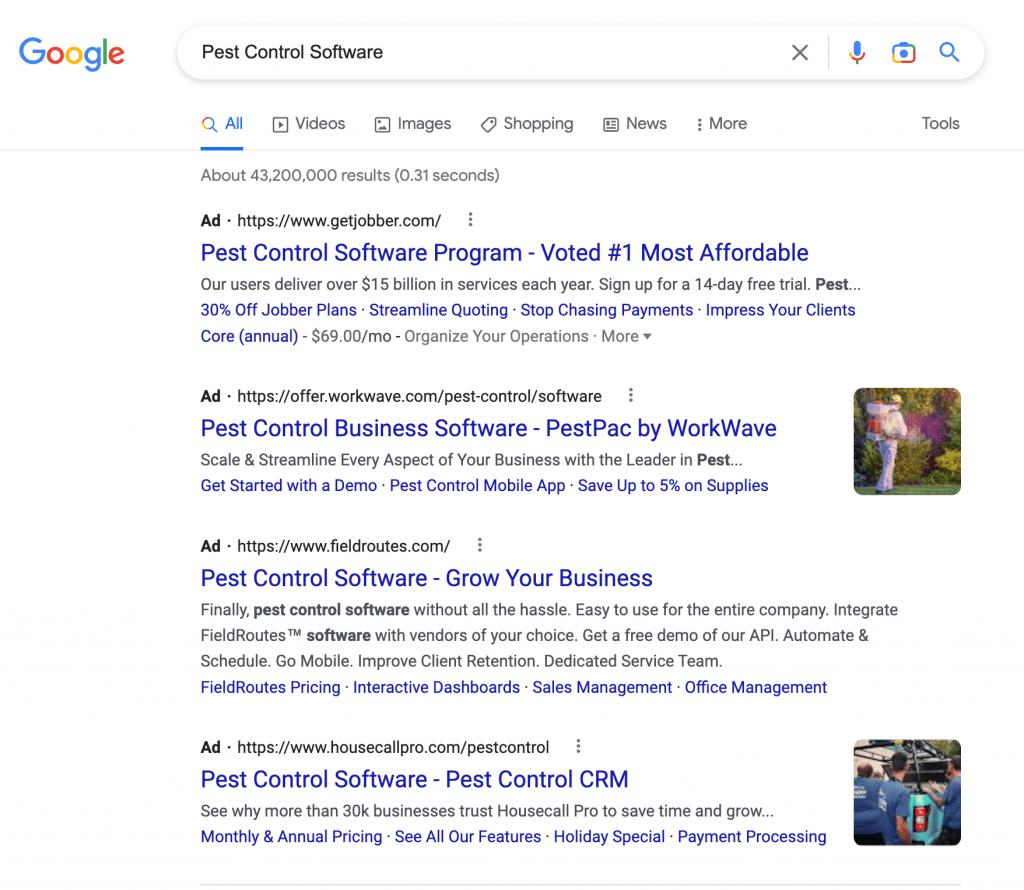What is Local SEO?
Chapter 2
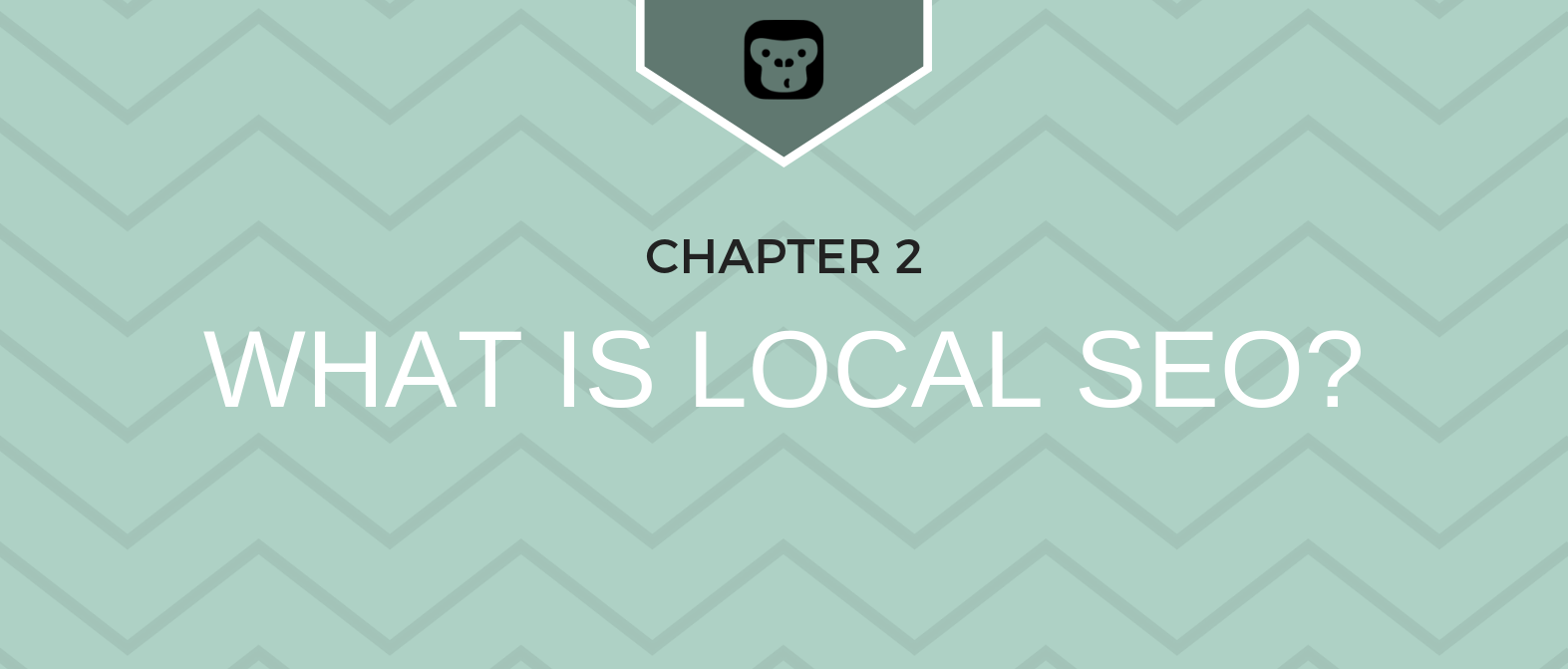
What is Local SEO?
Think about the last time when you wanted to try a new Mexican restaurant.
What did you do?
You probably took your cell phone out and Googled, ‘Mexican restaurants near me.’
Right?
The results you got were something similar to the below screenshot(s).
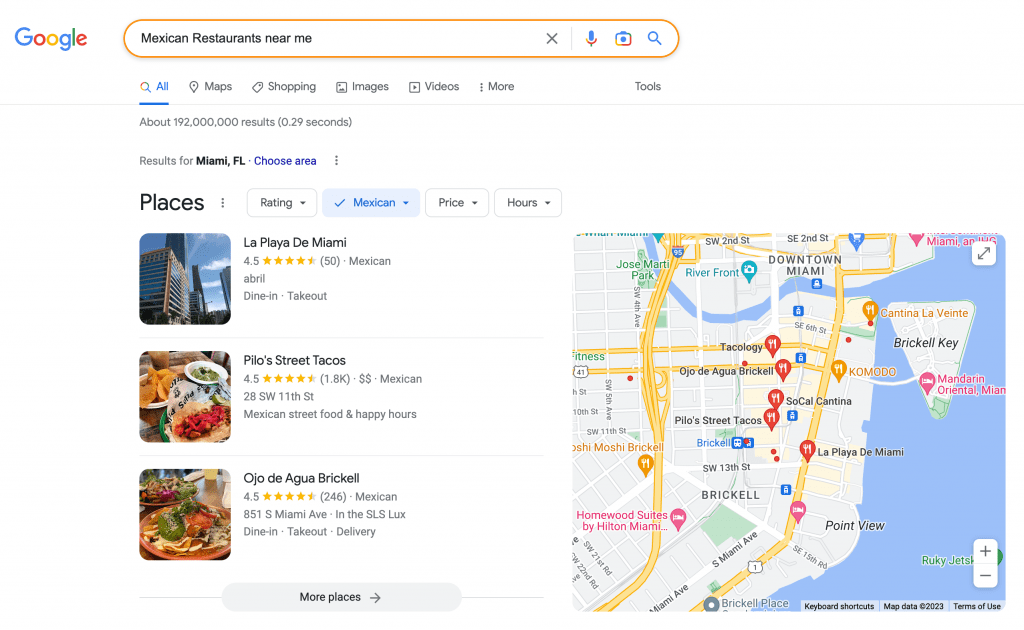


Following this, you probably chose one of the restaurants near the top and enjoyed your evening.
The interesting thing here is that the steps you took here are similar to what a lot of people would do when looking for a pest control business.
Thus, if you own a pest control business, it makes sense you’d want to be near the top of the listings.
But how do you do this?
The answer?
Local SEO.
Using local SEO, you can ensure your website appears near the top of the search listings for certain keywords that are associated with a specific location.
So, if you own a pest control business in Seattle, using local SEO, you can get your website near the top of the listings should someone search ‘pest control Seattle.’
The kinds of people typing in this keyword are actively looking to spend money with a pest control business.
And so it’s clear to see that if you can do this, you’ll experience an increase in the number of inbound leads.
Now, this all sounds good.
But what about real-world results? Can local SEO really deliver?
Well, here’s a case study associated with one of the pest control companies we’ve worked with.
Take a look at what their results were in January 2023.

Click here to view Image 23As you can see, they received a total of around 136 calls in January 2023.
That’s the power of Local SEO.
Remember, these are calls from people that are contacting the company, actively looking for information, and looking to spend money.
How would your business, or even life, change if you could achieve the same for your business?
Well, if you understand how to get results with local SEO, it’s entirely possible for you to achieve similar results.
All you need to do is execute the information in this playbook.
Quick Note – Local SEO Vs. Global SEO
You may already know about SEO. But the kind of SEO you already know about is probably ‘Global SEO’ and not ‘local SEO.’
Let’s take a look at the difference by first examining two screenshots associated with a specific search term.
This:
Ads section
Position Zero section
Organic results section
Click here to view Image 48And this:
Click here to view Image Local-SEO-Result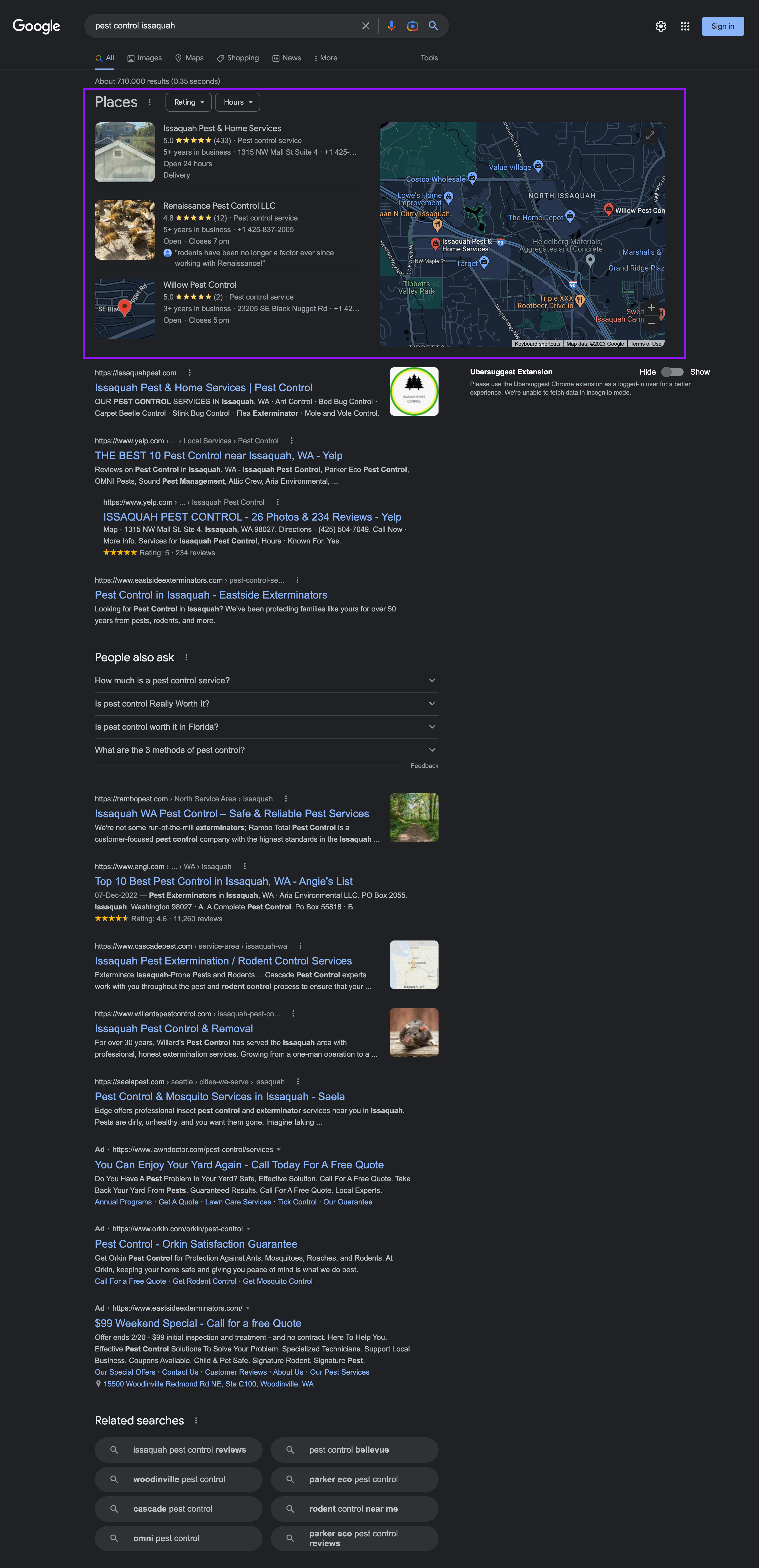
Did you notice any difference in the above two screenshots?
The main difference is – the Google Map Pack in the search results.
The first search is generic and for a ‘Pest Control Software’ solution globally.
It doesn’t have anything to do with the location.
On the other hand, the second search is about a service called ‘pest control’ in a specific location, ‘Miami.’
Thus the main difference between global SEO and local SEO is the geographical component. Using local SEO, you want to ensure your business appears in the search listings should people within a specific region search for a business like yours.
What are your goals and where do you currently stand?
Before we get to local SEO factors, let’s do a small exercise.
I’m going to ask you to take a look at your business, what you want online, where you are now, and how you can reach your goals.
It may sound like a wishy-washy step for a local SEO playbook, but the following model has helped businesses worldwide build a successful local online presence.
Exercise #1– What does a successful local SEO presence look like?
I want you to imagine what it’d be like to have a strong local SEO presence. Once you know what you’d like, you can then set goals for what you’d like to achieve.
For example, back in June of 2018, we took a dive into our traffic stats & organic leads and realized our numbers were poor.
It was a clear indication that a great website alone is not going to be enough.
That’s when we started to invest in local SEO.
When we first got started, our goal was:
- To rank on Google’s first page for ‘pest control Miami’ and ‘pest control services Miami’ keywords.
- Timeframe: 60-90 days
Now, it’s your turn to set up your future goals.
What does a successful local SEO presence look like?
- Which keywords do you want to target?
- How many leads will this result in?
How soon do you want to achieve the ‘successful local online presence’ goal?
The answer to this question is very tricky. In an ideal world, you want to achieve your goal tomorrow.
But it isn’t that easy.
Multiple factors come together to determine how long your pest control website is going to take to reach page #1.
We will cover everything in detail in Module 8. However, it’s recommended that you don’t jump to that section.
Exercise #2 – Where are you now?
Now that you know where you want to be, it’s time to examine where you are now.
To do this, you need to ask yourself the following questions –
- Does your business show up on Google’s first page for keywords that you want?
- Does your website have enough reach? (How many people visit your site on a monthly basis)
- Are you getting new customers from your website without spending a dime on paid advertising?
Let’s take a look at how you should go about answering these questions.
1) Does your business show up on Google’s first page for keywords that you want?
Go to www.google.com and enter your main keyword, ‘Pest Control + your location,’ in the search bar. An example might be ‘pest control Miami.’
First, check in the Google map pack:
Click here to view Image 62Do you see your business there? If you do, congratulations. You’re doing great.
If you don’t, it’s not the end of the world – that’s what this guide is for!
Now, check in Google organic rankings:
Click here to view Image 106Do you see your business ranking in there?
If you do, great!
If you don’t, again, it’s a sign you should focus on local SEO.
2) Does your website have enough reach? (How many people visit your site on a monthly basis)
To check, go to your Google Analytics account, Then go to ‘Audience >> Overview.’
If your site traffic (new user count) is too low (<200 a month), your pest control site could probably benefit from local SEO.
Note: If you don’t have a Google Analytics account or don’t know how to check, don’t worry! We can help you set this up. Reach out to us at [email protected].
3) Are you getting new calls, leads, and customers from your website without spending a dime on paid advertising?
Do you get new service inquiries or requests from the contact form or other forms on your website?
If your answer is a NO or the number of inquiries is low (less than 20 or 30 inquiries per month), local SEO can help.
Now, it’s going to take a lot of work to establish a strong local SEO presence.
But the beauty of having this playbook is that you don’t have to mess around with untested strategies. Provided you use the tips in this playbook, you should be able to bridge the gap between where you are and where you want to be.
The Factors that affect Local SEO
It’s important to note that success with local SEO comes down to getting a number of things right. If you can do all of these things well, you should see an improvement in your rankings.
Here are the factors that affect local SEO –
- Having a Google My Business (GMB) Page
- Local and Standard Citations
- Having a Map Packs Presence
- On-page SEO & schema markup
- Backlinks
- Reviews
The rest of this playbook is essentially going to teach you how you should approach each of these factors so that you can establish a solid local SEO strategy.
It’s important you take all of these factors seriously.
If you don’t – you’re essentially leaving an opportunity for your competitors.
Up Next…
3. Google My Business
Ready to Get Started?
Get all our amazing features and top-rated support, with no credit card required.
